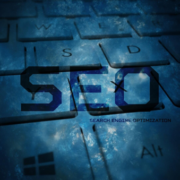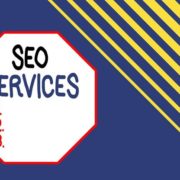Searching For SaaS Development Perfection: Typical Tech Stacks And Functionality
Finding the perfect SAAS tech stack for your software-as-a-service (SaaS) application can feel like searching for a needle in a haystack. With so many options and technologies available, it’s easy to get lost.
The ideal tech stack for SaaS leverages cutting-edge solutions to drive efficiency and innovation. But it’s not easy. However, it has the potential to skyrocket productivity, enhance security, and significantly reduce time-to-market – elements crucial for any thriving SaaS offering.
This article will illuminate typical tech stacks used by industry giants and explore essential functionalities that differentiate good from great SaaS applications.
How To Choose The Technology Stack For Saas?
When choosing the best SaaS technology stack, consider factors like project size, scalability, time to market, and security. Planning and using ready-made solutions are important for a successful tech stack.
Picking the right tech stack for your SaaS project needs careful thought. Here are key points to focus on:
- Project size matters a lot. Small projects do fine with simpler, less robust technologies. Big projects need more advanced tools to handle many users and data without breaking.
- Scalability is super important. Your tech stack should let your app grow easily. It means handling more users, data, or both without major headaches.
- Time to market must be addressed. Some tech stacks make it faster to build and launch your app. This is crucial to get ahead of competitors or meet tight deadlines.
- Security is a must-have. With hackers always looking for a way in, choosing tech that protects user data and transactions is non-negotiable. This includes using trusted servers and setting up strict access rules.
Importance Of Planning And Using Ready-made Solutions
Planning is key to SaaS development success. Starting with a solid plan means you know what tech and tools you need from the start, which saves time and money. Using ready-made solutions like Docker helps, too.
These solutions make development faster and less complicated.
Ready-made tools also offer proven security and efficiency. For example, container orchestration tools streamline deploying and managing containers in production. Choosing these well-tested options reduces risks.
It allows developers to focus more on creating unique features than solving common problems from scratch.
Front-End Tech Stacks
When building a SaaS, the front-end tech stack is crucial for user experience and interface design. It includes programming languages like HTML and JavaScript and popular frameworks such as Vue.js.
HTML is the backbone for creating web pages, allowing developers to structure content with support for multimedia elements like audio and video. JavaScript breathes life into these pages by adding interactivity.
This combination makes websites not just informative but engaging, too.
Using HTML5, developers can build more dynamic and responsive web applications that work well across different devices. JavaScript frameworks amplify this capability by enabling more complex features like pop-ups and real-time updates without refreshing the page.
Together, they form the core of front-end development for SaaS applications, ensuring users get a rich online experience.
Back-End Tech Stacks
Popular server infrastructure options for back-end developers include IIS, AWS, Google Cloud, Apache, Nginx, and DigitalOcean. A web application’s back-end includes server infrastructure, an app server, and a database.
Developers can ensure the efficient functioning of the SaaS platform by selecting the ideal server infrastructure and components to support it.
Python is commonly recommended for the back-end programming language in SaaS tech stacks. React, a preferred framework by Fortune 500 companies, is often used for web development. Front-end technologies like HTML, JavaScript, and CSS are vital for SaaS development projects.
When crafting a SaaS tech stack, consider using Python as the back-end language due to its suitability and compatibility with cloud platforms like Microsoft Azure and Amazon Web Services (AWS).
Database options are another crucial component of the SaaS tech stack when transitioning from front-end technologies to back-end development. They impact its scalability and performance. Popular databases like Redis, MongoDB, MySQL, and PostgreSQL offer developers versatile storage and retrieval solutions.
For instance, Airbnb shifted from MySQL to Amazon RDS for cloud-enabled database storage, highlighting the impact of database choice on successful SaaS implementations.

Conclusion
The SaaS tech stack sounds like it could be easier to build. But these technologies can elevate businesses from scratch and make them a full-fledged platform that can sustain high and low periods like no other.



